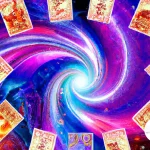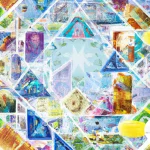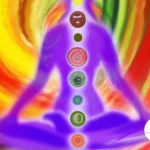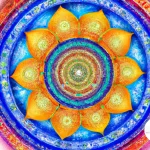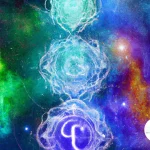Uncovering the Secrets of Numerology in Mayan Civilization: Throughout history, ancient civilizations have left behind mysteries that continue to captivate our imagination. One such civilization is the Mayans, who flourished in Mesoamerica from around 2000 BCE to 1500 CE. Among their numerous accomplishments in art, architecture, and astronomy, the Mayans also had a deep understanding and reverence for numbers. Their sophisticated numerological system served as a key element of their culture, influencing everything from their calendar to their prophecies. In this article, we will delve into the secrets of Mayan numerology, exploring its origins, significance, and methods. We will also examine its influence in modern times and unravel the intriguing Mayan prophecies that have intrigued scholars and enthusiasts alike. Join us on this fascinating journey as we shed light on the enigmatic world of Mayan numerology.
The Mayan Civilization
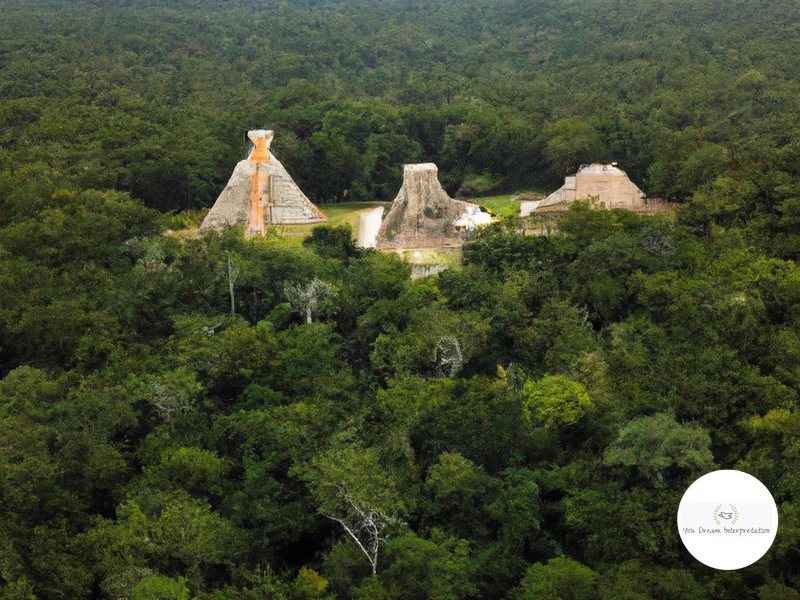
The Mayan Civilization, which thrived in Mesoamerica, was a highly advanced and influential society that existed for thousands of years. Their civilization was characterized by its impressive achievements in areas such as mathematics, architecture, writing, and astronomy. The Mayans developed a complex system of hieroglyphic writing that recorded their history, rituals, and beliefs. They also constructed magnificent cities with towering pyramids, intricate architecture, and advanced irrigation systems.
The Mayans had a deep spiritual and mystical connection to the universe, and this is evident in their numerological beliefs and practices. Numerology played a significant role in Mayan culture, as it was believed that numbers held immense power and symbolism. The Mayans saw numbers as a way to understand the world and connect with the divine.
One key aspect of Mayan numerology was their understanding of the concept of zero. Unlike many other ancient civilizations, the Mayans recognized and incorporated zero into their mathematical system. This innovation allowed them to perform intricate calculations and accurately track the movements of celestial bodies.
The Mayan Calendar System is a testament to their advanced mathematical knowledge. It was a complex and highly accurate system that involved several interlocking calendars, each serving different purposes. The Long Count Calendar, for example, was used to calculate long periods of time and played a crucial role in predicting significant events and prophecies.
Through their numerological practices, the Mayans sought to uncover the hidden meanings behind numbers and their influence on individuals and the world around them. The Mayans believed that each individual had a unique birth number that determined their personality traits, strengths, and weaknesses. These birth numbers were calculated based on a complex system that took into account the individual’s birth date.
Today, the influence of Mayan numerology can still be seen in popular practices such as astrology and numerology readings that focus on individual birth numbers. Many people turn to Mayan numerology to gain insight into their personalities, relationships, and life purpose. The intricate and profound numerological system developed by the Mayans continues to spark fascination and curiosity, drawing us into the captivating world of ancient Mesoamerica.
Related link: Decoding Your Destiny Number: Unveiling Your Unique Personality
1. Origins and History
The origins and history of the Mayan civilization are shrouded in mystery and intrigue. The exact origins of the Mayans are still a subject of debate among archaeologists and historians. However, it is believed that the Mayans emerged as a complex society around 2000 BCE in what is now present-day Mexico and parts of Central America.
The early Mayan civilization consisted of several city-states that were governed by powerful rulers. These city-states engaged in trade, warfare, and cultural exchange with neighboring civilizations such as the Aztecs and the Olmecs.
The Mayans experienced a period of significant growth and development during the Classic Period, which lasted from around 250 CE to 900 CE. During this time, the Mayans built magnificent cities and created impressive works of art and architecture. Their cities were centers of commerce, religion, and political power.
The decline of the Mayan civilization is a topic of great speculation and debate. Around 900 CE, many of the Mayan cities were abandoned, and the civilization went into a period of decline. The reasons for this decline are still not fully understood but are thought to be a combination of factors such as warfare, drought, environmental degradation, and internal unrest.
Despite the decline of their civilization, the Mayans left behind a rich and enduring cultural legacy. Their hieroglyphic writing system, known as Mayan glyphs, is one of the few fully developed writing systems of the ancient Americas. This system allowed the Mayans to record their history, religious beliefs, and astronomical knowledge in great detail.
Today, we continue to unravel the secrets of the Mayan civilization through archaeological discoveries and the decipherment of Mayan texts. These efforts have shed light on the complex and sophisticated nature of Mayan society and their deep understanding of mathematics, astronomy, and numerology.
Related link: Discover Your Soul Urge Number: Tapping into Your Inner Desires
2. Key Numerological Concepts
Key Numerological Concepts:
1. The Mayans attributed significant importance to numbers in their culture, viewing them as fundamental building blocks of the universe. They believed that each number possessed a unique energy and symbolic meaning that influenced various aspects of life.
2. Number Symbolism: Numbers held symbolic representations in Mayan numerology. For example, the number 13 held great significance as it represented the number of major joints in the body. It was associated with completion, transformation, and the cycles of life and death. Similarly, the number 20 was considered sacred because it represented the total number of fingers and toes, serving as the basis for the Mayan base-20 number system.
3. Sacred Numbers: The Mayans considered certain numbers to be sacred and believed that they had divine powers. These sacred numbers were often associated with significant celestial bodies or natural phenomena. For example, the number 4 was linked to the four cardinal directions, representing balance and stability. The number 9 was associated with the nine layers of the underworld and symbolized transformation.
4. The Mayan Calendar System: One of the key numerological concepts in Mayan civilization was their calendar system. The Mayans developed multiple calendars, each serving various purposes and tracking different cycles of time. The Haab calendar, for instance, consisted of 18 months of 20 days each, with a five-day period called the Wayeb considered as a time of transition and reflection.
By analyzing these key numerological concepts, one can begin to grasp the intricate understanding the Mayans had of numbers and their significance. These concepts laid the foundation for the numerological practices that played a vital role in various aspects of Mayan culture, from their calendar system to their spiritual beliefs.
Related link: Unraveling the Power and Meaning of the Destiny Number
The Significance of Numbers in Mayan Culture
In Mayan culture, numbers held a deep significance and were considered to be sacred. Each number was believed to possess its own unique energy and symbolism, influencing various aspects of life and the universe as a whole. The Mayans assigned meaning to numbers based on their observations of the natural world, celestial events, and their spiritual beliefs.
Number Symbolism played a central role in Mayan culture. The Mayans associated certain qualities and concepts with specific numbers. For example, the number one represented unity and the beginning, symbolizing the creative force that initiates all existence. Two was associated with duality and balance, representing the interconnection of opposites. Three held symbolic significance for the Mayans, representing the harmony of the cosmos as well as the three realms of the universe: the heavens, the earth, and the underworld.
Sacred Numbers also played a crucial role in Mayan culture. Some numbers were considered especially powerful and were believed to carry divine attributes. The number thirteen, for instance, had enormous significance in Mayan numerology. It was seen as a sacred number representing transformation, cycles, and renewal. The Mayans believed that there were thirteen levels of heaven and thirteen levels of the underworld, with the earthly realm positioned in between.
The Mayans’ intricate knowledge and understanding of numbers were embodied in their Calendar System. The Mayan Calendar System consisted of multiple interlocking calendars that tracked different cycles of time. One of the most well-known calendars was the Tzolkin, which consisted of 260 days and was used for divination and forecasting auspicious dates for various activities. The Haab was a solar calendar used for tracking agricultural seasons and determining the most favorable times for planting and harvesting.
Related link: Unraveling the Power and Meaning of Your Destiny Number
1. Number Symbolism
Number symbolism held great significance in Mayan culture, with each number carrying its own unique symbolism and meaning. The Mayans believed that numbers were not just mere quantities but had an inherent spiritual essence that connected them to the divine realm. Here are some examples of the number symbolism in Mayan civilization:
1. The number 1: In Mayan numerology, the number 1 represented unity, beginnings, and independence. It symbolized the creative force that brings everything into existence. The Mayans believed that the number 1 had a strong connection to the gods and was associated with leadership and individuality.
2. The number 4: The number 4 held great significance in Mayan culture as it represented the four cardinal directions – north, south, east, and west. These directions were associated with different elements, gods, and colors. The number 4 symbolized stability, balance, and completeness. It was believed to bring harmony and order to the world.
3. The number 13: The number 13 was considered sacred and powerful in Mayan numerology. It represented the number of levels or heavens in the Mayan cosmology. The Mayans believed that each level had its own set of gods and spiritual forces. The number 13 symbolized transformation, ascension, and spiritual growth. It was associated with cycles and was often used in the Mayan calendar system.
4. The number 20: The Mayans used a base-20 numbering system, which means they counted in units of 20 instead of 10 like our modern decimal system. The number 20 held special significance as it represented a complete cycle. It was associated with the Mayan calendar’s 20-day cycle called the “uinal.” The number 20 symbolized a period of growth, learning, and transformation.
The Mayans believed that by understanding the symbolism and meaning behind numbers, they could gain a deeper understanding of the world and their place in it. Number symbolism played a crucial role in Mayan rituals, ceremonies, and even in architecture, where certain numbers and proportions were used to create sacred spaces. The intricate understanding and integration of number symbolism showcase the Mayans’ profound connection to the spiritual realm and their deep reverence for numbers.
Related link: Discover Your Soul Urge Number: Unlocking the Secrets of Your Inner Desires
2. Sacred Numbers
Sacred numbers held immense significance in Mayan culture, playing a central role in their spiritual beliefs and practices. The Mayans believed that certain numbers possessed divine qualities and were connected to the fundamental forces of the universe. These sacred numbers were associated with gods, celestial bodies, and natural elements, making them integral to the Mayans’ understanding of the world.
One such sacred number was the number 13. In Mayan cosmology, the number 13 represented the sacred cycles of the heavens and was associated with the lunar calendar. The Mayans believed that there were 13 heavens above and 13 levels of the underworld below. Additionally, there were 13 major deities in the Mayan pantheon, each governing different aspects of life. The number 13 held immense power and was considered a symbol of divine energy and transformation.
Another significant sacred number in Mayan numerology was the number 20. The Mayans used a base-20 number system, which was uniquely different from the base-10 system most commonly used today. The number 20 had symbolic value and represented completeness and balance. It was believed to encompass the variability and diversity of the natural world, as well as the cycles of time.
The combination of the numbers 13 and 20 held even greater importance in Mayan mythology. The Mayan calendar system, known as the Tzolk’in, consisted of interlocking cycles of 13 days and 20 days. These cycles would repeat, creating a 260-day calendar that was used for various purposes, including divination, astrology, and determining auspicious dates for important events.
The Mayans also assigned sacred qualities to specific numbers based on their symbolic associations. For example, the number 4 represented stability and the four cardinal directions, while the number 9 symbolized completion and the nine levels of the underworld. Each number had its own unique significance and was thought to embody certain energies and characteristics.
The understanding of sacred numbers allowed the Mayans to establish a profound connection with the spiritual realm and gain insights into the cosmic order. By recognizing the divine qualities of specific numbers, they were able to navigate the physical and spiritual realms and seek harmony and balance in their lives.
The sacred numbers in Mayan culture continue to intrigue and inspire people today, offering a glimpse into the deep spiritual beliefs and complex numerical system of this ancient civilization.
Related link: Discover Your Soul Urge Number: Unveiling Your Inner Desires
3. The Mayan Calendar System
The Mayan Calendar System was a complex and sophisticated method of timekeeping that played a pivotal role in Mayan society. It consisted of several interlocking calendars, each serving a specific purpose and providing different types of information. These calendars allowed the Mayans to accurately track time, predict celestial events, and organize their religious and agricultural practices.
One of the most well-known calendars within the Mayan Calendar System is the Long Count Calendar. This calendar was used to measure long periods of time and was based on a base-20 numerical system. The Long Count Calendar was capable of measuring time spans ranging from days to thousands of years. It provided a framework for recording historical events, tracking astronomical phenomena, and making predictions about the future.
Another essential calendar in the Mayan Calendar System was the Haab. The Haab was a solar calendar that consisted of 18 months, each with 20 days. Additionally, a period of five extra days, called the Wayeb, was added at the end of each year to complete the 365-day solar cycle. The Haab calendar was significant for its agricultural relevance, as it helped the Mayans determine the best timing for planting and harvesting crops.
The Tzolk’in Calendar was another crucial component of the Mayan Calendar System. It was a 260-day ritual calendar that combined two smaller cycles: a cycle of 13 numbers and a cycle of 20 named days. The Tzolk’in calendar was believed to be divinely inspired and played a vital role in religious ceremonies, prophecies, and predictions.
The interplay between the Long Count Calendar, the Haab, and the Tzolk’in Calendar created a cycle known as the Calendar Round, which lasted for approximately 52 years. This cycle was of great significance to the Mayans, as they believed that events and patterns repeated themselves in cycles, ultimately influencing the fate and destiny of individuals and the entire civilization.
The Mayan Calendar System was incredibly accurate, incorporating complex astronomical calculations and observations. It allowed the Mayans to anticipate celestial events such as solar and lunar eclipses, equinoxes, and solstices. The ability to predict these events reinforced the Mayans’ belief in the interconnectedness of the cosmos and their place within it.
The intricate Mayan Calendar System, with its multiple calendars and precise timekeeping, demonstrates the advanced understanding of mathematics, astronomy, and spirituality within Mayan civilization. Its influence can still be seen today, as many people continue to study and interpret the Mayan Calendar System, seeking its wisdom and guidance in navigating the complexities of time and the universe.
Related link: Unraveling the Power and Meaning of Your Destiny Number
Unveiling Mayan Numerological Methods
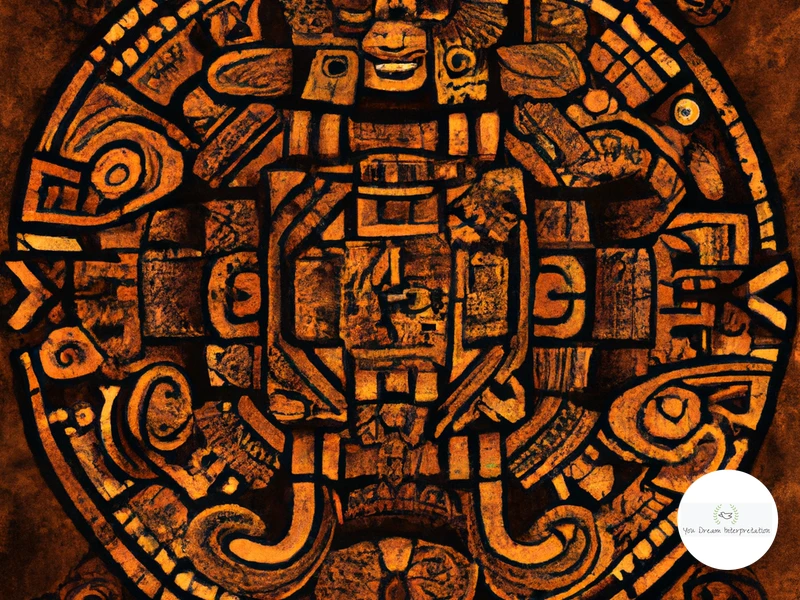
Mayan numerology is a complex and sophisticated system that offers insights into various aspects of life, including personal characteristics, relationships, and destiny. To understand the Mayan numerological methods, we need to explore the foundation of their number system. The Mayans used a base-20 number system, unlike the familiar base-10 system we use today. This system allowed them to conceptualize and work with larger numbers more easily.
One crucial element of Mayan numerology is the role of zero. The Mayans were one of the first civilizations to recognize and utilize zero as a numerical value. Zero was seen as a void or an empty vessel ready to be filled. In Mayan numerology, zero represented infinite potential and was considered a powerful symbol.
To calculate an individual’s birth number in Mayan numerology, several steps are involved. First, the birth date is converted into the Mayan calendar system, which consists of 13 numbers and 20 day signs. Each number and sign carries its own unique energy and significance. By analyzing the combination of these numbers and signs, a Mayan numerologist can determine an individual’s birth number.
The birth number reveals specific traits and characteristics associated with an individual. For example, if someone has a birth number of 1, they are believed to possess strong leadership qualities and a pioneering spirit. On the other hand, a person with a birth number of 13 may exhibit transformative abilities and a talent for bringing about change.
Mayan numerological methods go beyond individual birth numbers. They also involve analyzing the energy and vibrations of other significant numbers, such as destiny numbers and life path numbers. Each of these numbers contributes to a person’s overall numerological profile and provides further insight into their life’s purpose and potential.
It is important to note that Mayan numerology is not meant to be seen as a definitive fortune-telling system. Rather, it serves as a tool for self-discovery and self-reflection. By exploring the depths of Mayan numerological methods, individuals can gain a deeper understanding of themselves and the world around them.
Related link: Discover Your Soul Urge Number: Unleashing Your Inner Desires
1. Base-20 Number System
The Mayan civilization utilized a unique base-20 number system, also known as a vigesimal system, to perform their mathematical calculations. Unlike the commonly used base-10 system, the Mayans counted in increments of 20, which had a profound impact on their numerological practices. This base-20 system consisted of various symbols that represented different numeric values, allowing the Mayans to perform complex calculations with ease.
To represent numbers from 1 to 19 in the Mayan base-20 system, the Mayans used a combination of dots and horizontal lines. Each dot represented one unit, while each horizontal line represented five units. By combining these symbols, the Mayans were able to represent any number from 1 to 19.
For numbers greater than 19, the Mayans introduced a new set of symbols. They used a shell-shaped symbol to represent 20, a flag-like symbol to represent 400, and a face-like symbol to represent 8,000. By combining these symbols in various ways, the Mayans could represent numbers up to incredibly large values.
To illustrate the Mayan base-20 system, here is an example:
1. The number 37 would be represented by three horizontal lines (15 units) and two dots (2 units), written as:
— — — • •
2. The number 112 would be represented by four shell-shaped symbols (80 units), three horizontal lines (15 units), and two dots (2 units), written as:
⌀ ⌀ ⌀ ⌀ — — — • •
The base-20 system used by the Mayans allowed for efficient calculations and precise measurements. This system played a crucial role in their understanding of time, astronomy, and the intricate workings of the universe.
It’s fascinating to explore how the Mayans developed such an innovative numerical system and the impact it had on their culture and beliefs. The base-20 system was not only a practical tool for mathematical calculations but also a fundamental element of Mayan numerology, contributing to their comprehensive understanding of the energetic properties and symbolism associated with numbers.
2. The Role of Zero
In Mayan numerology, one of the most important and revolutionary concepts was the role of zero. Unlike many other ancient civilizations, the Mayans recognized and incorporated zero into their mathematical system. This may seem like a small detail, but the inclusion of zero transformed their numerical capabilities and paved the way for more advanced calculations.
Before the Mayans embraced the concept of zero, their number system was based on a combination of dots and bars. However, this system had its limitations. It was difficult to represent large numbers and perform complex calculations with precision. The introduction of zero as a placeholder symbol allowed the Mayans to express numbers more efficiently and accurately.
The Mayans understood zero as a symbol of emptiness or nothingness, representing the absence or absence of quantity. This may have stemmed from their observation of the night sky, where they recognized the vast expanse of empty space between celestial bodies. They saw zero as a fundamental element in understanding the universe and harnessing its mathematical principles.
With the inclusion of zero, the Mayans could create a place value system that allowed them to represent increasingly large numbers. By positioning zero in different places within a numerical sequence, they could multiply the value of each digit by multiples of 20. This base-20 system, known as the vigesimal system, was fundamental to Mayan numerology.
The introduction of zero also enabled the Mayans to develop complex calendrical calculations. By using zero in their calendar system, they could accurately track and predict celestial events, such as eclipses and planetary alignments. These calculations were essential for agricultural planning, religious ceremonies, and prophecies.
The role of zero in Mayan numerology represents a profound understanding of the importance of nothingness and its impact on the world. The inclusion of zero in their mathematical system not only revolutionized their numerological practices but also paved the way for advancements in other areas of Mayan civilization. The Mayans’ recognition of zero’s significance in their numerical system demonstrates their advanced thinking and their dedication to unlocking the mysteries of the universe.
Related link: Discover Your Soul Urge Number: Unraveling the Power and Meaning
3. Calculating Individual Birth Numbers
Calculating individual birth numbers in Mayan numerology is a fascinating process that involves a combination of mathematical calculations and symbolic associations. To determine an individual’s birth number in the Mayan system, several steps need to be followed.
First, the birth date is broken down into its component parts: day, month, and year. Each component is then converted into a specific numerical value. For example, in the Mayan system, the day is represented by a number between 0 and 19, the month is represented by a number between 0 and 18, and the year is represented by a number between 0 and 19.
Once the numerical values for the birth date components are determined, they are added together to obtain a single-digit or double-digit number. If the sum is a double-digit number, the two digits are further added together until a single-digit number is obtained. This final number represents the individual’s birth number in the Mayan numerological system.
To illustrate this process, let’s use an example. Suppose a person was born on the 8th day of the 7th month in the year 1990. In the Mayan system, the day value for 8 is 8, the month value for July (the 7th month) is 6, and the year value for 1990 is 8. Adding these values together (8 + 6 + 8) gives us a total of 22. Since this is a double-digit number, we further add the digits (2 + 2), resulting in a final birth number of 4.
Each birth number in Mayan numerology carries its own unique symbolism and significance. Understanding the meanings associated with each number can provide valuable insights into an individual’s personality traits, strengths, and weaknesses. Exploring the fascinating world of Mayan numerology and calculating individual birth numbers allows us to tap into the wisdom of this ancient civilization and gain a deeper understanding of ourselves and the world around us.
Note: The calculations presented here are based on the general principles of Mayan numerology. Different sources and practitioners may use slightly different formulas and interpretations in their calculations.
Example Calculation:
- Birth date: 8th day of the 7th month, year 1990
- Day value: 8
- Month value: 6 (since July is the 7th month)
- Year value: 8
- Total: 8 + 6 + 8 = 22
- Final birth number: 2 + 2 = 4
Mayan Numerology in Modern Times
Mayan numerology continues to have a significant influence in modern times, as people around the world embrace its wisdom and insights. Here are a few key ways in which Mayan numerology is practiced and appreciated in the modern era:
1. Popular Numerological Practices: Many individuals turn to Mayan numerology to gain a deeper understanding of themselves and their life path. By calculating their birth numbers, which are based on Mayan numerological methods, people can uncover their unique personality traits, strengths, and challenges. This information can be used to make informed decisions, navigate relationships, and pursue personal growth and fulfillment.
2. Numerological Influence in Mayan Art and Architecture: The rich symbolism and numerical significance in Mayan culture are often reflected in their art and architecture. The use of specific numbers and patterns in the design of Mayan temples, pyramids, and glyphs carries deep meaning and serves as a testament to their reverence for numerology. Studying Mayan artwork can provide valuable insights into their numerical beliefs and practices.
3. Exploration in Alternative Healing and Wellness: Mayan numerology has also found its way into the realm of alternative healing and wellness. Practitioners may use numerological calculations to identify the root causes of physical or emotional imbalances and guide individuals toward holistic healing. By aligning their lives with the energy of specific numbers, individuals can harness their power for greater well-being and spiritual growth.
4. Self-Discovery and Personal Growth: Many people engage with Mayan numerology as a tool for self-discovery and personal growth. By delving into their birth numbers and exploring the characteristics associated with them, individuals can gain deeper insights into their life purpose, passions, and potentials. This knowledge empowers them to make conscious choices and live more authentically.
Mayan numerology remains relevant and influential in modern times. Its principles and practices continue to be cherished by those who seek a greater understanding of themselves and their connections to the universe. By embracing the ancient wisdom of Mayan numerology, individuals can enrich their lives and embark on a journey of self-discovery and personal transformation.
1. Popular Numerological Practices
Mayan numerology has not only intrigued scholars and historians but has also captured the interest of modern enthusiasts seeking insights into their lives. Today, there are several popular numerological practices that are influenced by Mayan traditions.
One widely used practice is the calculation of a person’s Destiny Number. This number is derived from the individual’s birth date and represents their life’s purpose and potential. By analyzing the numerical value assigned to each letter in a person’s birth date, a skilled numerologist can determine the influences and energies that shape their destiny. Understanding one’s Destiny Number can provide guidance and clarity regarding career choices, relationships, and personal growth.
Another popular numerological practice derived from Mayan traditions is the exploration of Soul Urge Numbers. This number is calculated using the vowels in a person’s name and represents their deepest desires, passions, and motivations. It reveals the innermost longings of an individual’s soul and provides insight into their true purpose and fulfillment. By understanding one’s Soul Urge Number, individuals can align their actions and decisions with their authentic selves, leading to a more fulfilling and meaningful life.
Additionally, Mayan numerology has inspired the practice of analyzing Birth Day Numbers. This number is derived from the day an individual was born and provides an understanding of their natural talents, strengths, and weaknesses. By exploring their Birth Day Number, individuals can gain insights into their innate abilities and make choices that align with their unique gifts.
Incorporating these numerological practices into their lives, people can gain a deeper understanding of themselves and their life paths. They can make informed decisions, embrace their true passions, and navigate life with a sense of purpose and fulfillment.
Related link: Discover Your Soul Urge Number and Unlock Your True Desires
2. Numerological Influence in Mayan Art and Architecture
Numerological influence in Mayan art and architecture was a prevalent and significant aspect of their culture. The Mayans believed that numbers held immense power and symbolism, and they incorporated these beliefs into their artistic and architectural expressions. The use of numerological principles can be seen in various aspects of Mayan art and architecture, including the layout and design of their cities, the dimensions and proportions of their structures, and the intricate patterns and motifs used in their artwork.
One prominent example of numerological influence in Mayan architecture is the use of the number 3. The Mayans believed that 3 was a sacred number representing the connection between the heavens, the earth, and the underworld. This belief is reflected in the architectural design of pyramid structures, where staircases are often divided into three sections. The number 3 is also seen in the ornamentation and carvings on the façades, with three representations of deities or mythological creatures.
Another significant numerological influence can be seen in the use of the number 9. The Mayans considered 9 to be a powerful number associated with cosmic order and completion. This belief is evident in the nine layers of the Mayan underworld depicted in their artwork and the nine levels of the heavens represented in their religious beliefs. In architectural structures, the number 9 is often expressed through the repetition and multiplication of elements, such as the use of nine doorways or nine steps.
In addition to specific numbers, the Mayans also incorporated geometric patterns that held numerological significance into their artwork and architecture. These patterns often represented the balance and harmony found in the natural world. The use of spirals, circles, and squares can be found in various Mayan artifacts, murals, and carvings. These geometric symbols were believed to have mystical and spiritual qualities, connecting the material and spiritual realms.
By incorporating numerological principles into their art and architecture, the Mayans sought to create sacred spaces and convey their cosmological beliefs. Their attention to detail and adherence to numerological symbolism created a sense of harmony and balance that resonated with their spiritual worldview. Today, the influence of Mayan numerology can still be seen in the art and architecture of Mesoamerican cultures, showcasing the enduring legacy of the Mayan civilization.
Related link: None.
Exploring the Mayan Prophecies
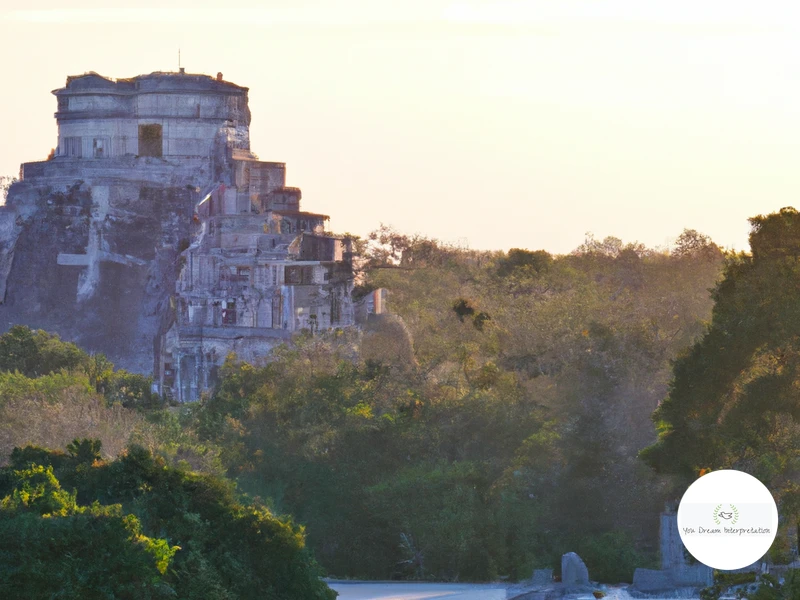
The Mayan civilization is often associated with mysterious prophecies that have captured the imagination of people around the world. One of the most famous Mayan prophecies revolves around the year 2012. According to some interpretations, the Mayan Long Count Calendar, which spanned over 5,000 years, was believed to come to an end on December 21, 2012, marking a significant transition or a potential apocalypse.
However, it is important to note that the Mayan prophecies do not actually predict the end of the world. Instead, they symbolize a period of transformation and renewal. The end of the Long Count Calendar was seen as a time of rebirth and the beginning of a new cycle. It was a time for reflection, personal growth, and collective consciousness.
Interpreting Mayan prophecies is a complex task, as the Mayans used symbolism and metaphor in their writings. Scholars and researchers have tried to unravel the meanings behind these prophecies, often linking them to astronomical events, historical shifts, and societal changes. Some believe that the prophecies suggest a time of spiritual awakening and a shift in global consciousness.
While the specific interpretations of the Mayan prophecies may be open to debate, what remains fascinating is the Mayans’ ability to predict celestial events and understand the cyclical nature of time. Their advanced astronomical knowledge allowed them to accurately calculate the movements of celestial bodies and link them to significant events on Earth.
Today, the exploration of Mayan prophecies continues to intrigue many people, especially those interested in spirituality, astrology, and ancient civilizations. Some find comfort and inspiration in the idea of a transformative period, while others seek guidance in understanding their personal journey within the context of collective evolution.
Exploring the Mayan prophecies invites us to delve into the rich tapestry of Mayan culture and spirituality. It encourages us to reflect on the cycles of time and our place within them. Whether we approach these prophecies with skepticism or fascination, they serve as a reminder of the profound ancient wisdom that still resonates with us today.
No internal link relevant to this section.
1. The Prophecy of 2012
The Prophecy of 2012 is one of the most well-known and debated predictions associated with the Mayan civilization. According to various interpretations, the Mayan Long Count Calendar came to an end on December 21, 2012, which led to speculations about the fate of humanity and the world. Contrary to popular belief, the Mayans did not predict an apocalyptic event or the end of the world. Instead, they believed that the end of a calendar cycle signaled a time of transition and transformation.
Some scholars suggest that the Mayan Prophecy of 2012 represented a shift in consciousness or a new era of spiritual growth and enlightenment. It was seen as an opportunity for individuals to evaluate their lives, reconnect with their purpose, and make positive changes. The prophecy served as a reminder to embrace inner transformation and live in harmony with nature and the universe.
The significance of the Prophecy of 2012 extends beyond the Mayan civilization. It captured the attention and imagination of people worldwide, sparking discussions, movies, books, and various interpretations. While the exact meaning of this prophecy remains a subject of interpretation, one thing is clear: the Mayans were able to convey a powerful message that resonates with the human desire for growth, change, and a deeper understanding of our place in the universe.
The Prophecy of 2012 represents an important aspect of Mayan numerology and spirituality. It reminds us of the potential for personal and collective transformation and serves as a timeless reminder to reflect on our lives and strive for a more harmonious existence. Whether the prophecy holds literal or symbolic meaning, its enduring impact lies in the questions and discussions it has sparked about the nature of time, spirituality, and the human experience.
Stay tuned to learn more about the interpretations and implications of Mayan prophecies in the next section of this article.
Related link: Unraveling the Power and Meaning of Your Destiny Number
2. Interpreting the Mayan Prophecies
Interpreting the Mayan prophecies is a fascinating endeavor that has captivated researchers and enthusiasts for centuries. The Mayans had a deep connection with the cosmos and believed that the alignment of celestial bodies held significant meaning and could foretell future events. One of the most well-known Mayan prophecies is associated with the year 2012. According to the Mayan Long Count Calendar, which spans over thousands of years, the date December 21, 2012, marked the end of an era and the beginning of a new one. This prophecy sparked a wave of speculation and interpretations, with some predicting cataclysmic events and others anticipating a spiritual or transformative shift.
Interpreting Mayan prophecies requires a nuanced understanding of their cultural framework and symbolism. Mayan prophecies were often inscribed on stelae or carved into other structures, providing a glimpse into their beliefs and predictions. To decipher these prophecies, experts examine the celestial alignments, numeric calculations, and symbolic representations.
It is important to approach Mayan prophecies with a balanced perspective, as there is a wide range of interpretations. Some experts suggest that the end of the Mayan calendar cycle in 2012 was not a doomsday event but rather a symbolic transition into a new era of consciousness and spiritual growth. Others argue that it was a literal prediction of significant changes or challenges that the world would face.
Interpreting Mayan prophecies also involves considering the historical and cultural context in which they were developed. The Mayans had a cyclical view of time, where events would repeat in patterns. This cyclical understanding of time influenced their prophecies, suggesting that history would repeat itself or that certain cosmic alignments would reoccur.
As we explore the Mayan prophecies, it is essential to approach them with an open mind and a respect for the complexities of their cultural beliefs. While the specific interpretations of Mayan prophecies may vary, the overarching themes of cosmic cycles, transformation, and the interconnectedness of the universe remain at the core. By delving into the intricate world of Mayan numerology, we can begin to unravel the profound messages embedded within their prophecies and gain a deeper understanding of our place in the cosmic tapestry.
Related link: Unraveling the Power and Meaning of Your Destiny Number
Conclusion
In conclusion, delving into the secrets of numerology in the Mayan civilization has provided us with a fascinating glimpse into their advanced mathematical and spiritual practices. The Mayans’ deep reverence for numbers is evident in their sophisticated numerological system, which influenced various aspects of their culture, including their calendar, prophecies, and understanding of individual personalities.
Through their base-20 number system and innovative inclusion of zero, the Mayans demonstrated a level of mathematical understanding that was far ahead of their time. Their intricate calendar system allowed them to accurately track time and make predictions about significant events. Furthermore, their belief in the power and symbolism of numbers is seen in their interpretation of birth numbers and their influence on an individual’s personality and destiny.
Even in modern times, the influence of Mayan numerology can be seen in popular practices such as astrology and numerology readings. People continue to seek guidance and insight by exploring their birth numbers and the meanings associated with them.
The Mayan civilization has left an indelible mark on history with their advancements and understanding of numerology. They have shown us that numbers have a significance beyond mere quantities – they hold profound symbolism and the power to unveil hidden truths about ourselves and the world around us.
As we continue to unravel the secrets of ancient civilizations like the Mayans, we gain a deeper appreciation for their wisdom and knowledge. Mayan numerology is not just a relic of the past but a timeless system that continues to captivate and inspire us.
Related links:
– Discover Your Soul Urge Number: Unlocking the Desires of Your Soul
– Unraveling the Power and Meaning of Your Destiny Number
Frequently Asked Questions
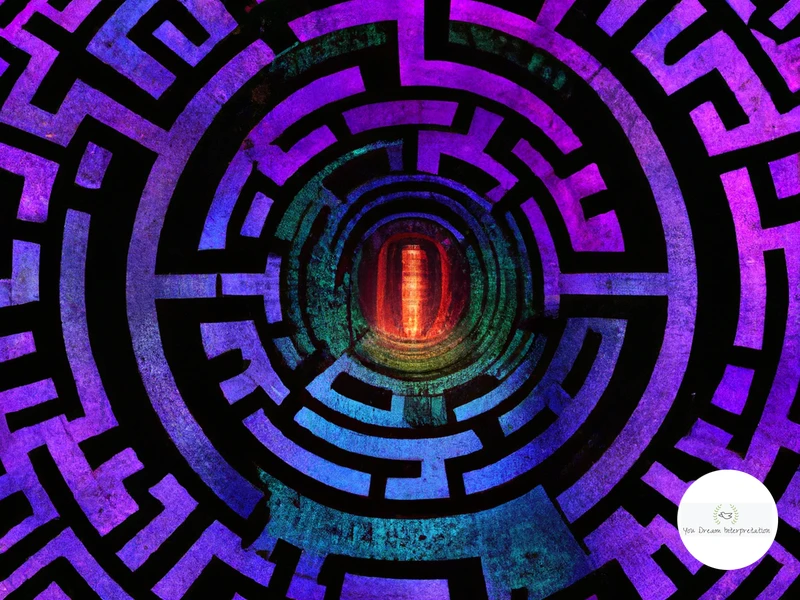
1. What is the significance of numbers in Mayan culture?
In Mayan culture, numbers held immense significance and symbolism. They were seen as a way to understand the world and connect with the divine. Mayans believed that numbers influenced various aspects of life, including personality traits, destiny, and even the movement of celestial bodies.
2. How did the Mayans calculate their birth numbers?
The Mayans used a complex system to calculate individual birth numbers. The calculation involved taking into account the person’s birth date and using specific formulas and symbols. Each birth number was believed to represent unique personality traits and characteristics.
3. What role did zero play in Mayan numerology?
The Mayans were one of the few ancient civilizations to recognize and incorporate zero into their mathematical system. The concept of zero allowed them to perform advanced calculations and accurately track celestial movements. It was a groundbreaking innovation in their numerological practices.
4. What is the Mayan calendar system?
The Mayan calendar system was a complex and accurate system that involved several interlocking calendars. These calendars served different purposes, such as tracking time, predicting celestial events, and guiding religious and agricultural activities. The Long Count Calendar, in particular, played a significant role in Mayan prophecies.
5. How has Mayan numerology influenced modern practices?
Mayan numerology continues to influence modern practices such as astrology and numerology readings. Many people consult Mayan numerology to gain insights into their personality traits, relationships, and life purpose. It provides a unique perspective on the power of numbers and their impact on our lives.
6. What makes the Mayan civilization unique among ancient civilizations?
The Mayan civilization stands out for its numerous achievements in various fields. Their advanced knowledge of mathematics, astronomy, writing, and architecture is particularly noteworthy. The Mayans’ profound understanding of numerology and its integration into their daily lives further sets them apart from other ancient civilizations.
7. Was the Mayan calendar accurate in predicting events?
The Mayan calendar, particularly the Long Count Calendar, was highly accurate in tracking celestial movements and calculating long periods of time. While there is debate surrounding its supposed predictions of major events, it is undeniable that the Mayans possessed a remarkable level of astronomical knowledge.
8. How are Mayan numerology and astrology connected?
Mayan numerology and astrology share similarities in their belief that numbers and celestial bodies hold significant influence over individuals and the world. Both practices seek to uncover hidden meanings and provide insights into personality traits and life paths.
9. Are there any famous Mayan prophecies?
The most well-known Mayan prophecy is the prophecy of 2012, which gained widespread attention in the modern world. However, there were numerous other prophecies and predictions made by the Mayans, many of which were connected to their intricate calendar system and astrological observations.
10. How can we interpret the Mayan prophecies and predictions?
Interpreting Mayan prophecies and predictions can be a complex task. It requires studying their calendar systems, understanding their cultural and symbolic significance, and considering various interpretations from historians, archaeologists, and scholars. Interpretations often involve examining celestial alignments, historical events, and the Mayans’ own beliefs and writings.
References
Frequently Asked Questions

1. What is the significance of numbers in Mayan culture?
Numbers held deep symbolic meaning in Mayan culture. They believed that numbers represented cosmic forces and were a means to communicate with the gods.
2. How did the Mayans use numbers in their everyday life?
The Mayans used numbers in various aspects of their daily lives, such as keeping track of time, predicting celestial events, recording historical events, and even in their architectural designs.
3. What is the Mayan calendar system?
The Mayans had multiple calendars that tracked different cycles of time. The most well-known is the Long Count calendar, which measures time in cycles of 5,126 years.
4. How did the Mayans calculate individual birth numbers?
The Mayans believed that each person had a specific birth number that determined their personality traits and destiny. To calculate this, they used a combination of the day, month, and year of a person’s birth.
5. What is the base-20 number system?
The Mayans used a base-20 number system, also known as a vigesimal system, rather than the base-10 system we use today. This system allowed them to perform complex calculations and record large numbers.
6. How does numerology influence Mayan art and architecture?
Numerological principles influenced the design and layout of Mayan art and architecture. Specific numbers were thought to hold certain energies or powers, and these were incorporated into the construction of temples, pyramids, and other structures.
7. What were the Mayan prophecies?
The Mayans had various prophecies, but the most well-known is the prophecy of 2012. It predicted significant changes and transformation at the end of a major cycle on their calendar.
8. How do we interpret the Mayan prophecies?
Interpreting the Mayan prophecies is a subject of much debate. Some believe it symbolizes a shift in consciousness, while others interpret it as a prediction of catastrophic events.
9. What popular numerological practices are influenced by Mayan numerology today?
Modern numerological practices influenced by Mayan numerology include the use of birth numbers, name numerology, and personal year calculations for guidance and insight.
10. Are there any numerological artifacts from the Mayan civilization that have been discovered?
Yes, there have been numerological artifacts discovered, such as inscriptions and glyphs, that provide insight into the Mayan numerical system and their belief in the power of numbers.
References
- The Secrets of Numerology Meanings Made Easy
- Marvellous Maya Number Facts
- The Mystery of the Lost Ancient Culture of the Maya



